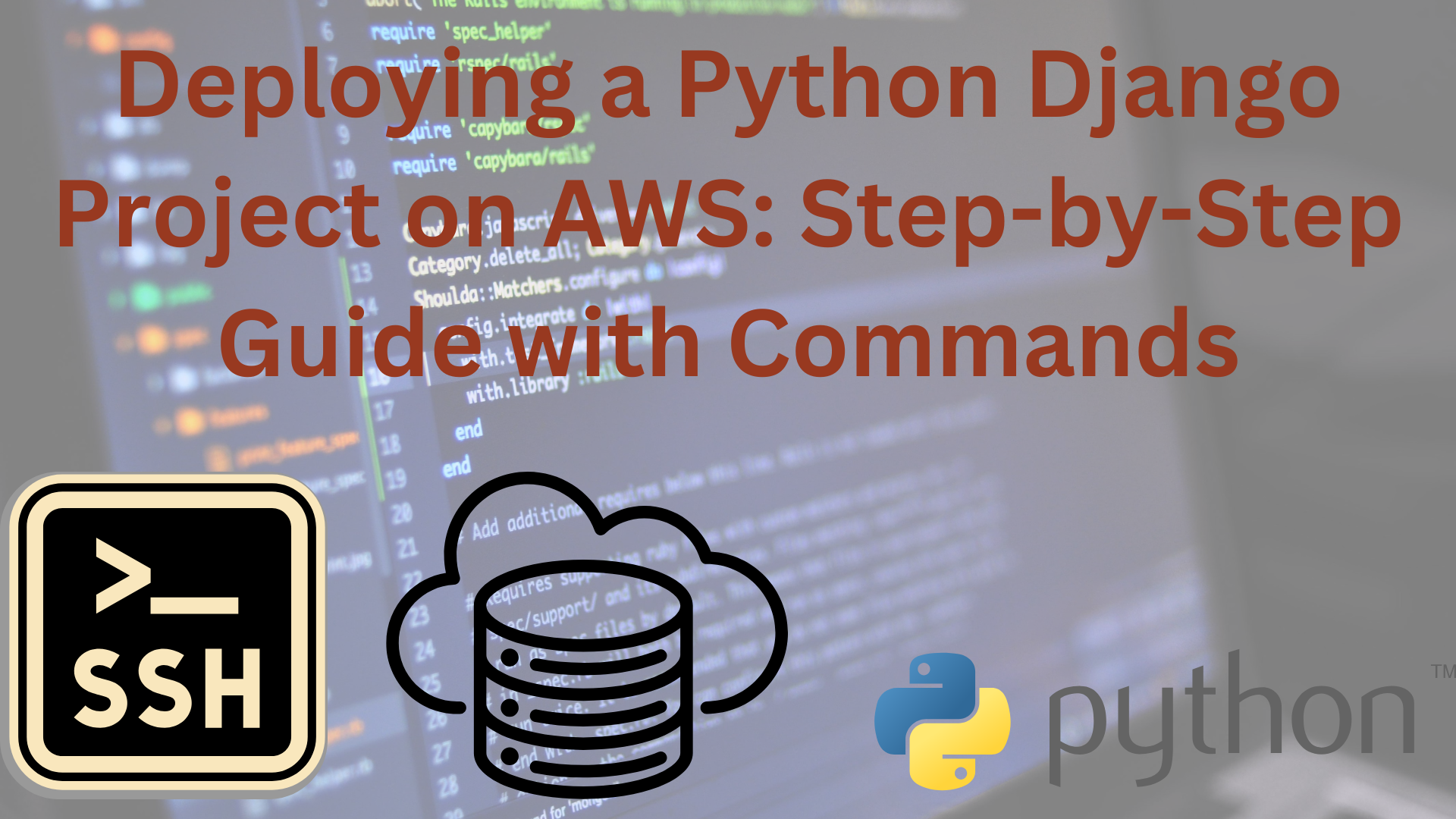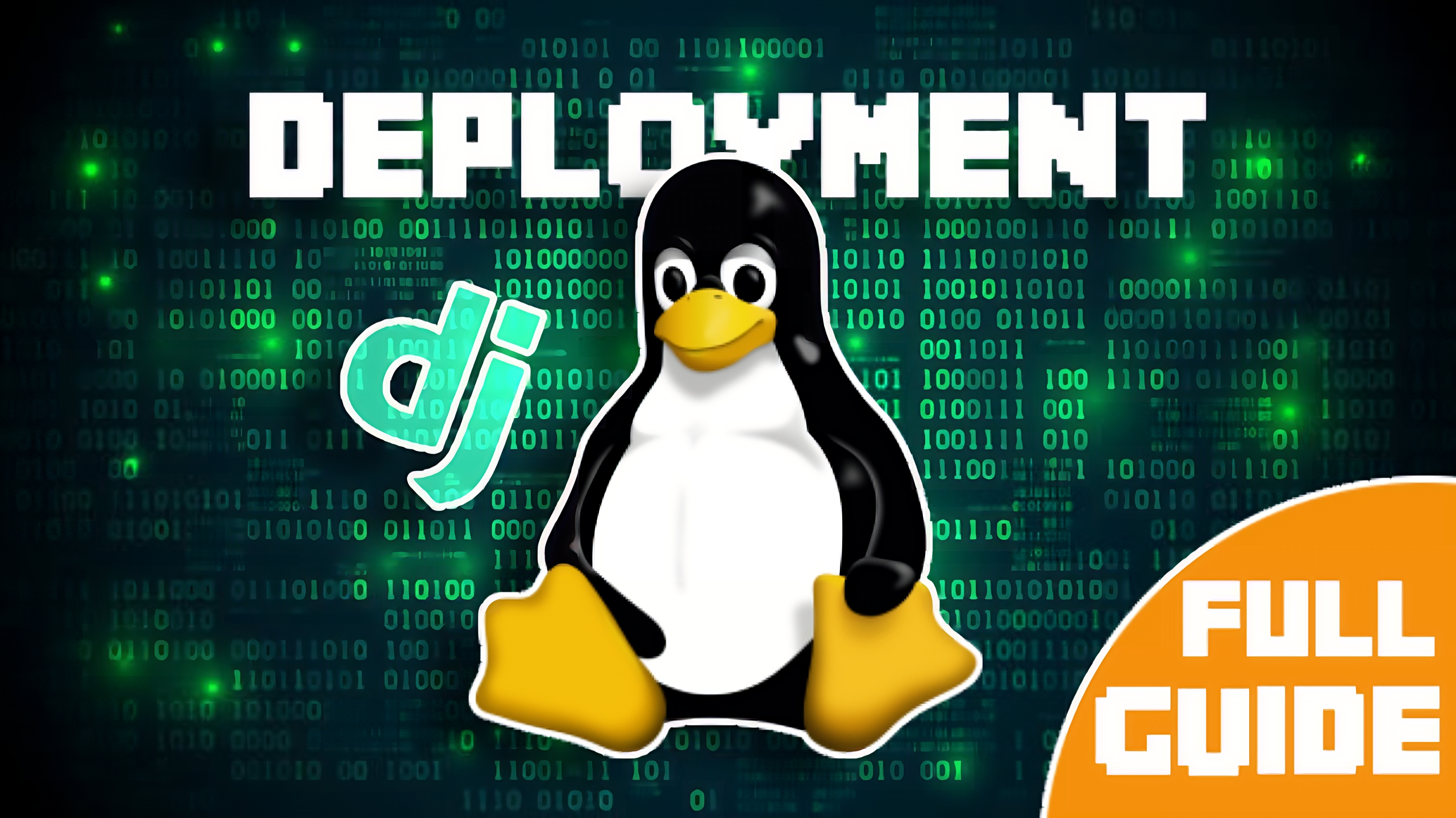
Deploying a Python Django Project on AWS: Step-by-Step Guide with Commands
Step-by-Step Deployment Guide
Step 1: Prepare Your Django Project
Ensure your Django project is fully functional and tested locally. Create a requirements.txt file containing all the necessary Python packages used in your project.
Step 2: Set Up an AWS Account
Sign up for an AWS account at aws.amazon.com and access the AWS Management Console to begin the deployment process.
Step 3: Launch an Amazon EC2 Instance
Launch an EC2 instance using the AWS Management Console or run the following command in your terminal:
aws ec2 run-instances --image-id ami-xxxxxxxxxxxxxxxxx --instance-type t2.micro --key-name your-key-pair-name --security-group-ids your-security-group-id --subnet-id your-subnet-id
Step 4: Connect to Your EC2 Instance
Using SSH, connect to your EC2 instance:
ssh -i /path/to/your-key.pem ec2-user@your-ec2-public-ip
For Ubuntu OS, use:
ssh -i /path/to/your-key.pem ubuntu@your-ec2-public-ip
Step 5: Install Required Dependencies
Install Python, pip, and virtualenv on your EC2 instance:
For Amazon Linux:
sudo yum update -y
sudo yum install python3 python3-pip -y
pip3 install virtualenv
For Ubuntu:
sudo apt update
sudo apt install python3-pip python3-venv -y
Step 6: Set Up a Virtual Environment
Create a virtual environment for your Django project:
mkdir my-django-project
cd my-django-project
python3 -m venv venv
source venv/bin/activate
Step 7: Upload Your Django Project Files
Upload your Django project files to the EC2 instance using SCP or any preferred method.
Step 8: Install Required Packages
Install the required Python packages specified in the requirements.txt file:
pip3 install -r requirements.txt
Step 9: Configure Your Database
Set up an Amazon RDS instance to host your Django project’s database. Create a database and update settings.py to connect to the RDS instance.
Step 10: Set Up Amazon S3
Create an Amazon S3 bucket to store media files (e.g., images, videos). Update settings.py to use the S3 bucket for media storage.
Step 11: Run Migrations and Collect Static Files
Run Django migrations to set up the database and collect static files:
python3 manage.py makemigrations
python3 manage.py migrate
python3 manage.py collectstatic
Step 12: Install and Configure a Web Server
Install and configure Nginx as a reverse proxy server:
For Amazon Linux:
sudo amazon-linux-extras install nginx1.12 -y
sudo systemctl start nginx
sudo systemctl enable nginx
For Ubuntu:
sudo apt install nginx -y
sudo systemctl start nginx
sudo systemctl enable nginx
Step 13: Deploy Your Django Project
Run your Django application using Gunicorn:
pip3 install gunicorn
gunicorn myproject.wsgi:application
Step 14: Secure Your Deployment
Enable HTTPS by obtaining and configuring an SSL certificate using ACM or a third-party provider.
Step 15: Associate a Custom Domain Name (Optional)
Associate a custom domain name with your Django project using Route 53 or a domain registrar’s settings.
Conclusion
Congratulations! You’ve successfully deployed your Python Django project on AWS using detailed commands. By following this step-by-step guide, you’ve created a scalable and secure environment for your application. AWS services like EC2, RDS, and S3 have enabled you to bring your web application to a global audience. As your project grows, consider exploring additional AWS services to enhance performance and scalability. Happy coding and enjoy the benefits of running your Django project on AWS!
Frequently Asked Questions (FAQ)
1. Why should I deploy my Django project on AWS?
AWS provides a scalable, secure, and reliable platform for hosting your Django project. With services like EC2, RDS, and S3, AWS helps you manage resources efficiently and reach a global audience.
2. How do I choose the right EC2 instance type for my project?
The instance type depends on your project’s requirements. For small projects or testing, t2.micro or t3.micro is sufficient. For larger applications, consider more powerful instances with higher RAM and CPU.
3. Can I use a database other than Amazon RDS?
Yes, you can use any database supported by Django. However, Amazon RDS offers managed database services with automated backups and scaling options, making it a convenient choice.
4. How do I handle media and static files in production?
Use Amazon S3 for media and static files. Update the Django settings.py file to configure S3 as the storage backend for your application.
5. How do I secure my Django project on AWS?
Secure your project by using HTTPS with SSL certificates, regularly updating your software, and implementing IAM roles and policies for access control.
6. Is AWS free for deploying Django applications?
AWS offers a Free Tier with limited resources, including EC2, RDS, and S3. For larger deployments, you may incur costs based on the services and usage.
For more information, visit Great Future Technology Private Limited to explore professional solutions and support for your Django projects.
Related Posts
You may like these post too
Comments on this post
0 comments



Leave a comment
it’s easy to post a comment